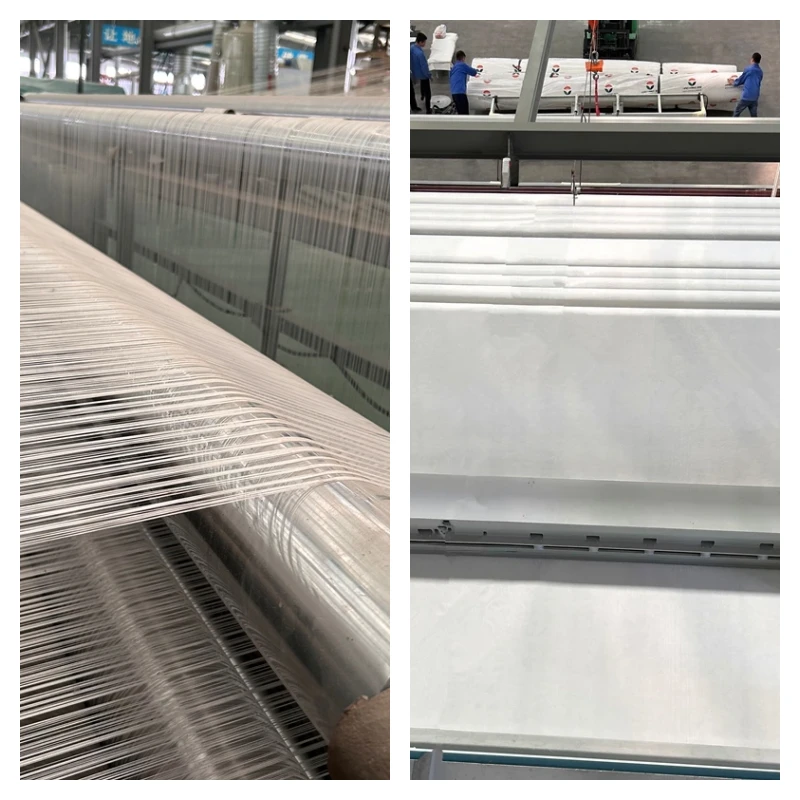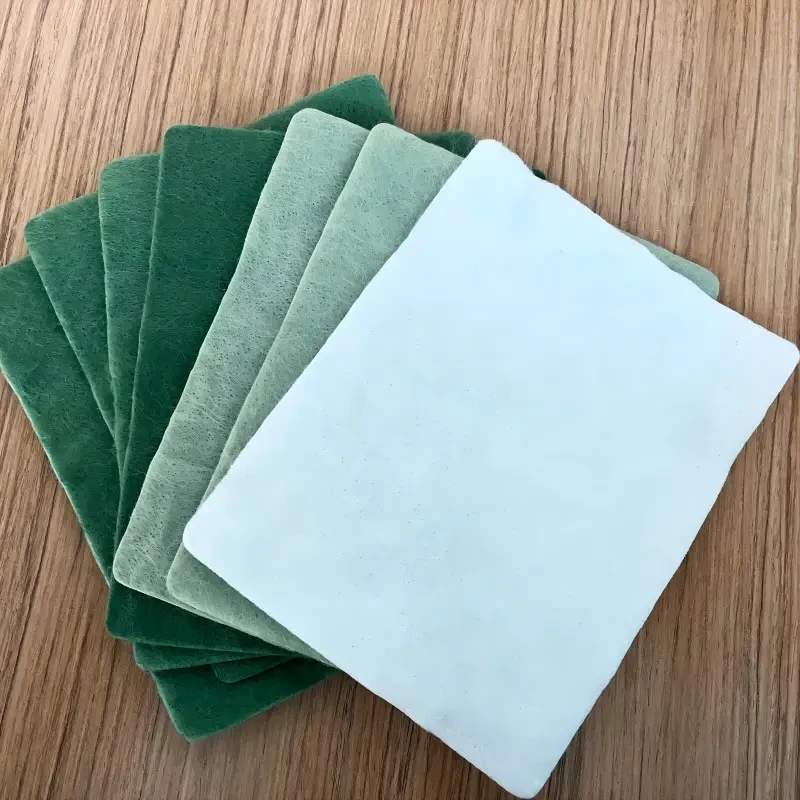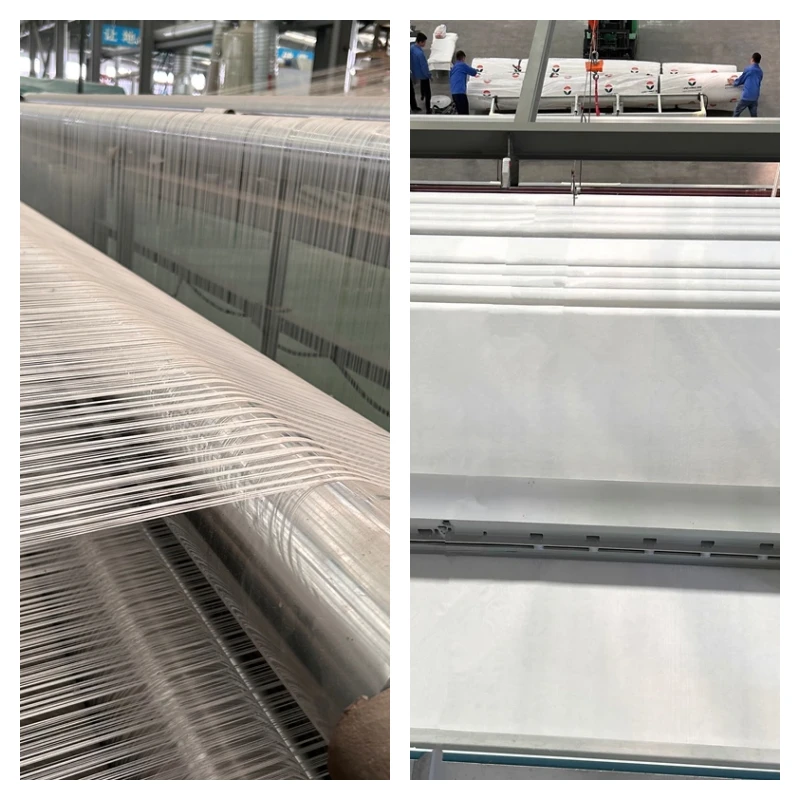When to Use Woven or Nonwoven Geotextile: A Complete Guide
Geotextiles, an essential material in modern civil engineering and environmental projects, play a crucial role in soil stabilization, drainage, and filtration. Two primary types of geotextiles are woven and nonwoven fabrics, each serving distinct functions based on their unique properties. Understanding when to use woven or nonwoven geotextile is key to achieving optimal performance, cost-effectiveness, and durability in projects such as road construction, landfills, drainage systems, and erosion control.
In this article, we will compare woven and nonwoven geotextiles, explore their advantages and disadvantages, and provide data-driven insights into when and why you should choose one over the other. We’ll also incorporate several data tables to guide decision-making.
What Are Woven and Nonwoven Geotextiles?
Before diving into their applications, let’s break down the two main types of geotextiles.
Woven Geotextiles: These are made by interlacing threads or yarns in a specific pattern. The fabric is typically stronger and more durable due to its structure, which is ideal for applications requiring mechanical strength, such as load-bearing projects.
Nonwoven Geotextiles: Unlike woven fabrics, nonwoven geotextiles are made from fibers that are bonded together through heat, chemicals, or mechanical processes. These fabrics are typically more flexible and permeable, making them ideal for filtration and drainage.

Key Properties of Woven vs. Nonwoven Geotextiles
Below are the key characteristics that differentiate woven from nonwoven geotextiles:
| Property | Woven Geotextiles | Nonwoven Geotextiles |
|---|---|---|
| Structure | Interlaced yarns | Bonded fibers (through heat or chemicals) |
| Strength | High tensile strength | Moderate to high strength, lower than woven |
| Permeability | Low permeability | High permeability |
| Durability | Highly durable, long-lasting | Less durable, susceptible to wear and tear |
| Cost | Typically more expensive | Generally more cost-effective |
| Use Case | Soil stabilization, reinforcement | Filtration, drainage, erosion control |
Woven Geotextiles: When and Why to Use Them
Woven geotextiles are often used in applications where mechanical strength and durability are paramount. These materials are ideal for projects where soil stabilization and load distribution are necessary. Below are some common scenarios and research-backed insights into when to use woven geotextiles.
Applications of Woven Geotextiles:
Road and Pavement Construction: Woven geotextiles are frequently used in road and pavement construction, particularly for reinforcing subgrades and reducing the impact of soil movement. Their high tensile strength helps distribute loads and prevent rutting.
Railway Track Construction: For railway tracks, woven geotextiles provide a stable foundation by preventing soil movement, improving track performance, and extending the life of the track.
Landfills and Waste Disposal Sites: Woven geotextiles help in preventing soil erosion and reinforcing landfill liners, as they provide structural integrity and resist high loads from the waste.
Data-Driven Insights for Woven Geotextiles:
A study conducted by the Geotechnical Engineering Journal found that woven geotextiles were more effective in preventing soil displacement in heavy traffic areas compared to nonwoven geotextiles. The tensile strength of woven geotextiles in this study showed a 30% increase in soil stabilization efficiency under load-bearing conditions.
| Application | Woven Geotextile Performance (%) | Nonwoven Geotextile Performance (%) |
|---|---|---|
| Load Distribution | 85% | 65% |
| Soil Reinforcement | 90% | 70% |
| Erosion Control | 75% | 60% |

Nonwoven Geotextiles: When and Why to Use Them
Nonwoven geotextiles are ideal for applications that require filtration, drainage, and erosion control. Their flexibility and permeability allow them to handle water flow and prevent fine particles from migrating through soil layers. Here are some common applications and key reasons to use nonwoven geotextiles.
Applications of Nonwoven Geotextiles:
Drainage Systems: Nonwoven geotextiles are extensively used in drainage systems, such as French drains, because their high permeability allows water to flow through the fabric while filtering out fine particles. This feature reduces clogging and ensures efficient drainage over time.
Erosion Control: For areas prone to erosion, such as slopes and riverbanks, nonwoven geotextiles are used to stabilize the soil. Their ability to filter and drain water while preventing soil loss makes them ideal for protecting land from erosion.
Septic Systems: In septic systems, nonwoven geotextiles are used to filter water and prevent soil compaction. They are especially useful for managing water in leach fields.
Data-Driven Insights for Nonwoven Geotextiles:
A report by International Journal of Geosynthetics and Ground Engineering found that nonwoven geotextiles provided 40% better filtration performance compared to woven geotextiles in water treatment applications. This was attributed to their ability to filter smaller particles due to their porous nature.
| Application | Woven Geotextile Performance (%) | Nonwoven Geotextile Performance (%) |
|---|---|---|
| Filtration | 60% | 85% |
| Water Permeability | 50% | 90% |
| Erosion Control | 70% | 80% |

Key Differences Between Woven and Nonwoven Geotextiles
Here are the main factors that influence the decision to use woven or nonwoven geotextiles:
| Factor | Woven Geotextiles | Nonwoven Geotextiles |
|---|---|---|
| Tensile Strength | High (recommended for reinforcement) | Moderate (adequate for drainage, erosion) |
| Permeability | Low to moderate (ideal for structural applications) | High (essential for filtration and drainage) |
| Flexibility | Low (rigid, better for reinforcement) | High (ideal for flexible applications like erosion control) |
| Cost | Higher | Lower |
Practical Considerations in Choosing Geotextiles
The decision of when to use woven or nonwoven geotextiles should be made based on several factors:
Project Requirements: What is the primary function of the geotextile—reinforcement or drainage?
Environmental Conditions: Is the project exposed to heavy traffic loads, or is the primary concern water filtration and soil erosion?
Cost-Benefit Analysis: How does the cost of the geotextile compare to the overall project budget and desired performance?
Longevity: Does the project require long-term durability, or are the materials expected to function effectively for a shorter period?
Choosing the Right Geotextile for Your Project
In conclusion, the choice between woven and nonwoven geotextiles is vital to the success of your project. Woven geotextiles are ideal for reinforcement applications that require high tensile strength, such as road construction and soil stabilization. On the other hand, nonwoven geotextiles excel in filtration, drainage, and erosion control, making them perfect for drainage systems, septic applications, and slope stabilization.
By taking into account key factors such as material properties, environmental conditions, and cost, you can ensure that your project benefits from the best possible geotextile solution. With the detailed insights and data provided in this guide, you are now equipped to make an informed decision based on the specific needs of your project.
If you are looking for high-quality geosynthetic materials for your upcoming projects, Haoyang Environmental Co., Ltd. offers comprehensive solutions to meet your needs. Since 2008, Haoyang has been a leader in the research, development, and manufacturing of advanced geosynthetics, specializing in a wide range of geotextiles for soil stabilization, drainage, and filtration applications.
Our products are backed by our expertise in environmental engineering design, and we offer custom solutions tailored to your specific requirements. As a high-tech service provider, Haoyang holds certifications such as ISO 9001, ISO 14001, and OHSAS 18001, demonstrating our commitment to quality and environmental responsibility. With a strong R&D team and a proven track record in environmental governance, Haoyang is your trusted partner in the geosynthetics industry.
For more information or to request a quote, please contact our sales team today.

897.webp)
942.webp)
237.webp)